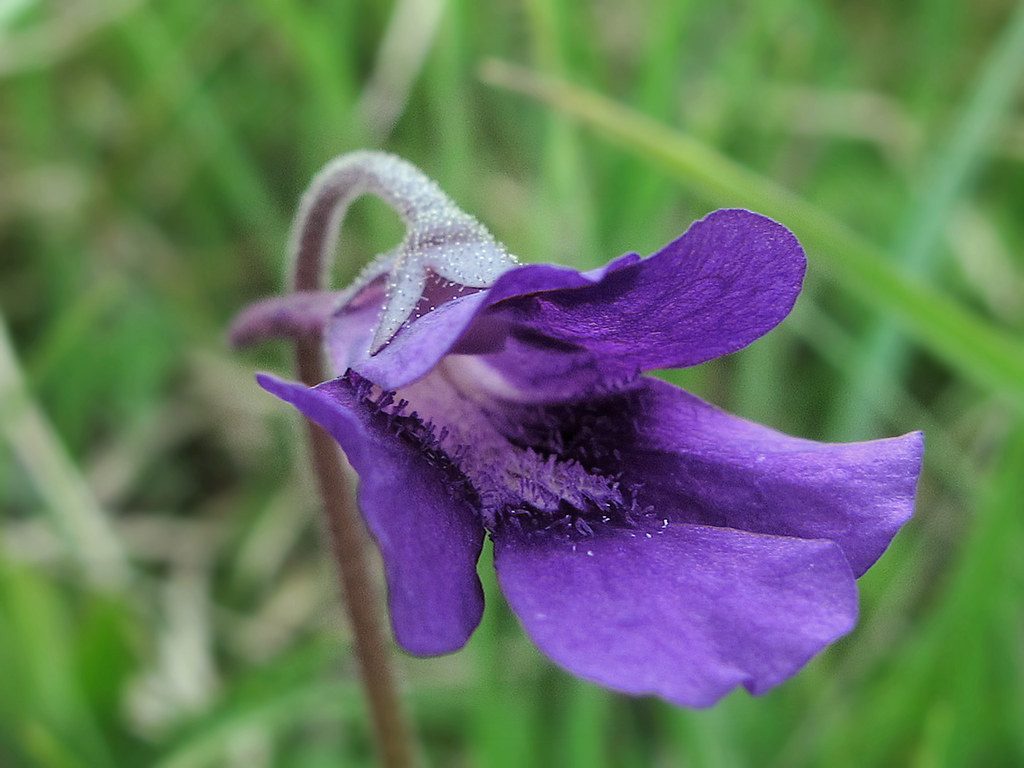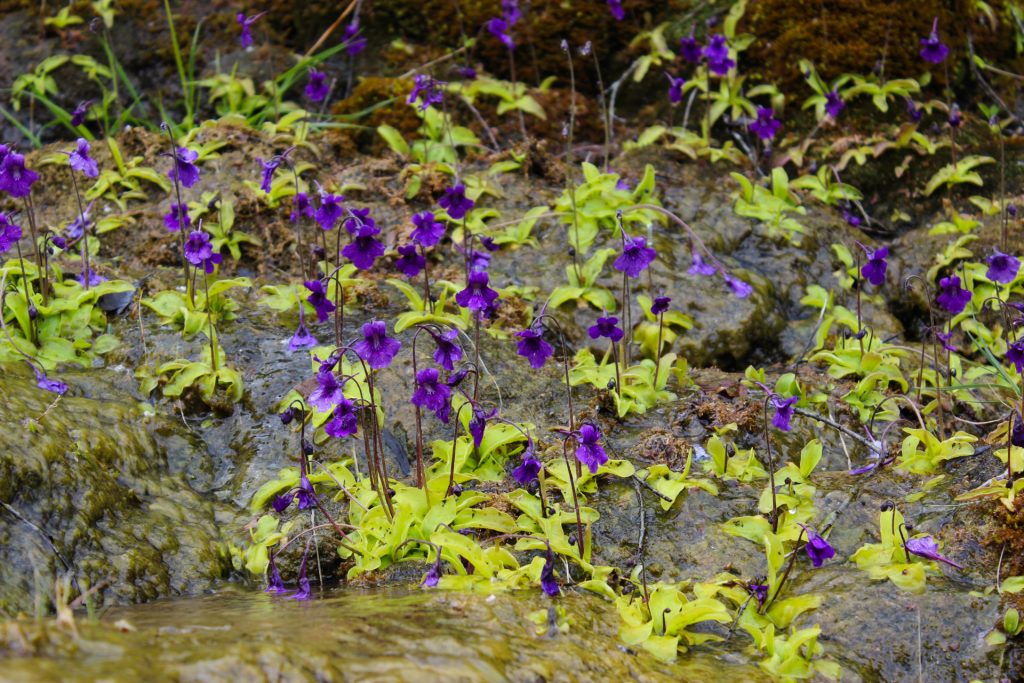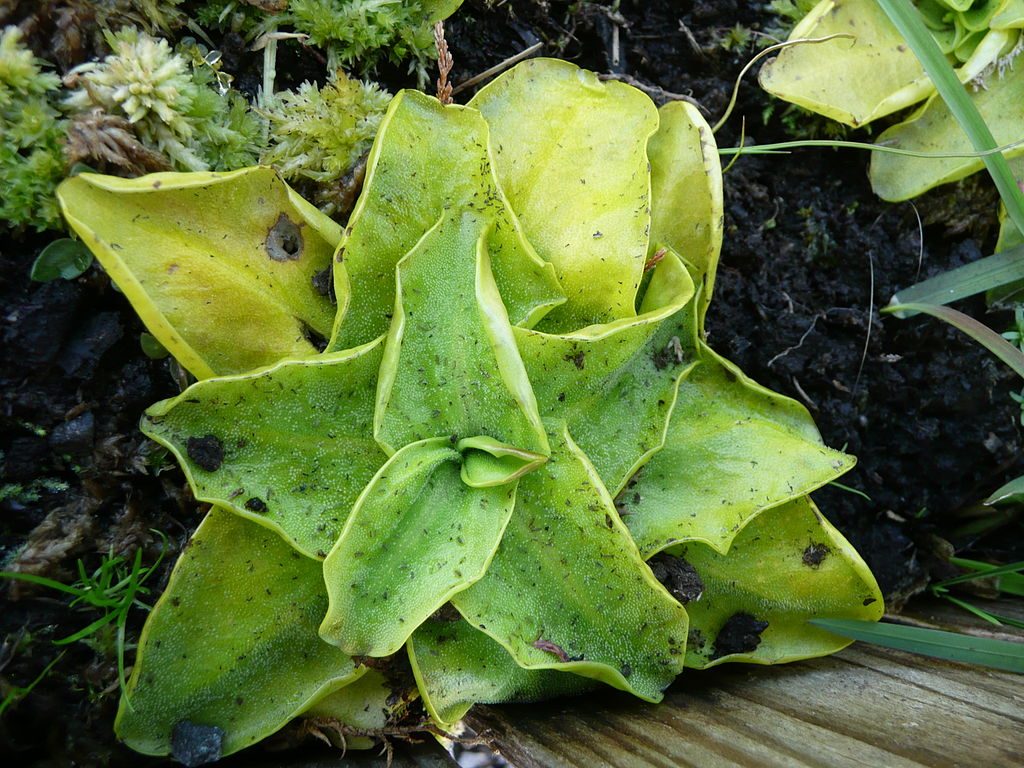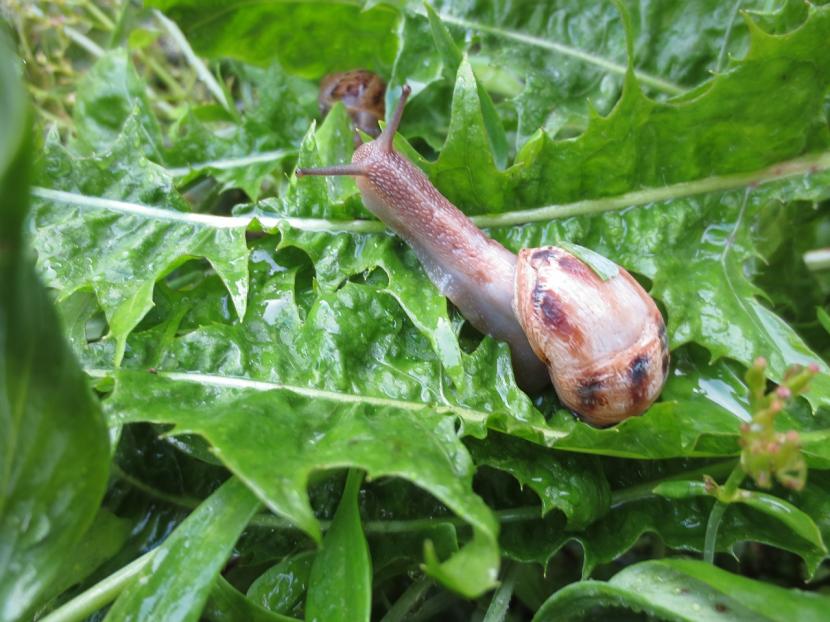
Image - Flickr / jacinta lluch valero
La pinguicula grandiflora It is a very curious carnivore: apparently it is a plant like any other, but when we look more closely at its leaves, and especially when we touch them, we will notice that the touch is not what we would expect from a conventional plant. Why is this happening?
Well, if you are a carnivorous plant you must have some part of the body that traps insects, and in the case of this species, it is a sticky substance that is right on the top of each leaf. And he is doing so well that It can be used as a natural and ecological anti-mosquito.
Origin and characteristics of pinguicula grandiflora

Image - Wikimedia / Eugenia Roig
La pinguicula grandiflora, popularly known by the names of tirana, water violet, flower of the fountains or flower of the Pyrenees, It is a plant formed by between 5 to 10 leaves which measure between 3 and 5 centimeters in length, almost triangular in appearance, and of a magnificent light green and even yellowish green color..
During the spring one or more stems of about 20-25 centimeters in length sprout from whose ends purplish flowers of slightly more than a centimeter and a half in diameter open. These are the largest of the entire genus Pinguicula, hence the surname grandiflora, what does big flower mean.
It grows naturally in Europe, specifically at an altitude between 1500 and 2500 meters, in Ireland, France, Switzerland and Spain, always in peat bogs, edges of streams and springs, and on soils rich in organic matter, in semi-shade.
What are the care you need?
Having an pinguicula grandiflora It is to have a precious little plant, which with minimal care can be healthy for a long time (years). It is true that it is not as easy as the Sarracenia for example, but that doesn't mean it's complicated. Absolutely. And then we are going to give you a guide so you can check it yourself 🙂:
Location
- Body exterior:: taking into account that these plants usually have them quite protected in the nurseries, I advise putting it in semi-shade. It wants a lot of light, but you have to avoid direct sun as it burns its leaves quickly.
- Interior: it is interesting as a terrarium plant, if it has adequate lighting (it can be achieved with this No products found.).
Earth
It must be grown in a plastic pot or planter with holes in the base filled with white peat mixed with equal parts perlite. (on sale here).
Of course, you have to moisten the mixture well with distilled or rain water, and then fill the pot.
Irrigation

Image - Wikimedia / Liné1
Frequent, but not too much. It requires that the substrate be permanently moist, but you have to be careful with puddles, especially during autumn and winter, which is when growth stops and, therefore, the less water it requires.
If you have it outside and in your area there are frosts, it is even more important if it is possible to control winter waterings, since if there is too much water it could freeze, thus damaging the roots. This if it were on the ground would not be a problem, not serious at least, since the water is distributed more or less uniformly throughout the area, but the pot is, one could say, a container that is closed by the substrate, of so that the root system would become more vulnerable to frostbite.
For this reason, In principle and depending on the climate, you have to water 3 or 4 times a week during the summer, and 2 a week the rest of the year.. Use distilled, rain, or osmosis water.
Subscriber
It should not be paid, never. She alone will 'hunt' her food 😉.
Multiplication

Image - Wikimedia / Amada44
La pinguicula grandiflora multiplies by seeds in spring, sowing the seeds in a plastic pot with peat moss mixed with perlite in equal parts.
Transplant
As it is a relatively small plant you will only need about two or three transplants in your lifetime, when you see that roots are coming out of the drainage holes or that it cannot continue to grow.
Do it in spring, being careful not to manipulate its roots too much.
Plagues and diseases
It is a carnivorous plant, yes, but it can also be attacked. Why? For the snails. Its leaves, being very tender, are an exquisite delicacy for these animals. So during the rainy season it is necessary to take measures to protect it, such as the following:
- Build him a kind of 'greenhouse' with mosquito netting.
- Spread diatomaceous earth around the pot (for sale No products found.).
- Put around some containers with beer.
- Put the plant indoors until the rains stop.

Rusticity
It is well resistant to cold and frost down to -7ºC, but both hail and snow cause damage to the leaves.
Where to buy pinguicula grandiflora?
It is one of the most common species of carnivorous plants in nurseries, but if you have trouble finding it you can click here:
